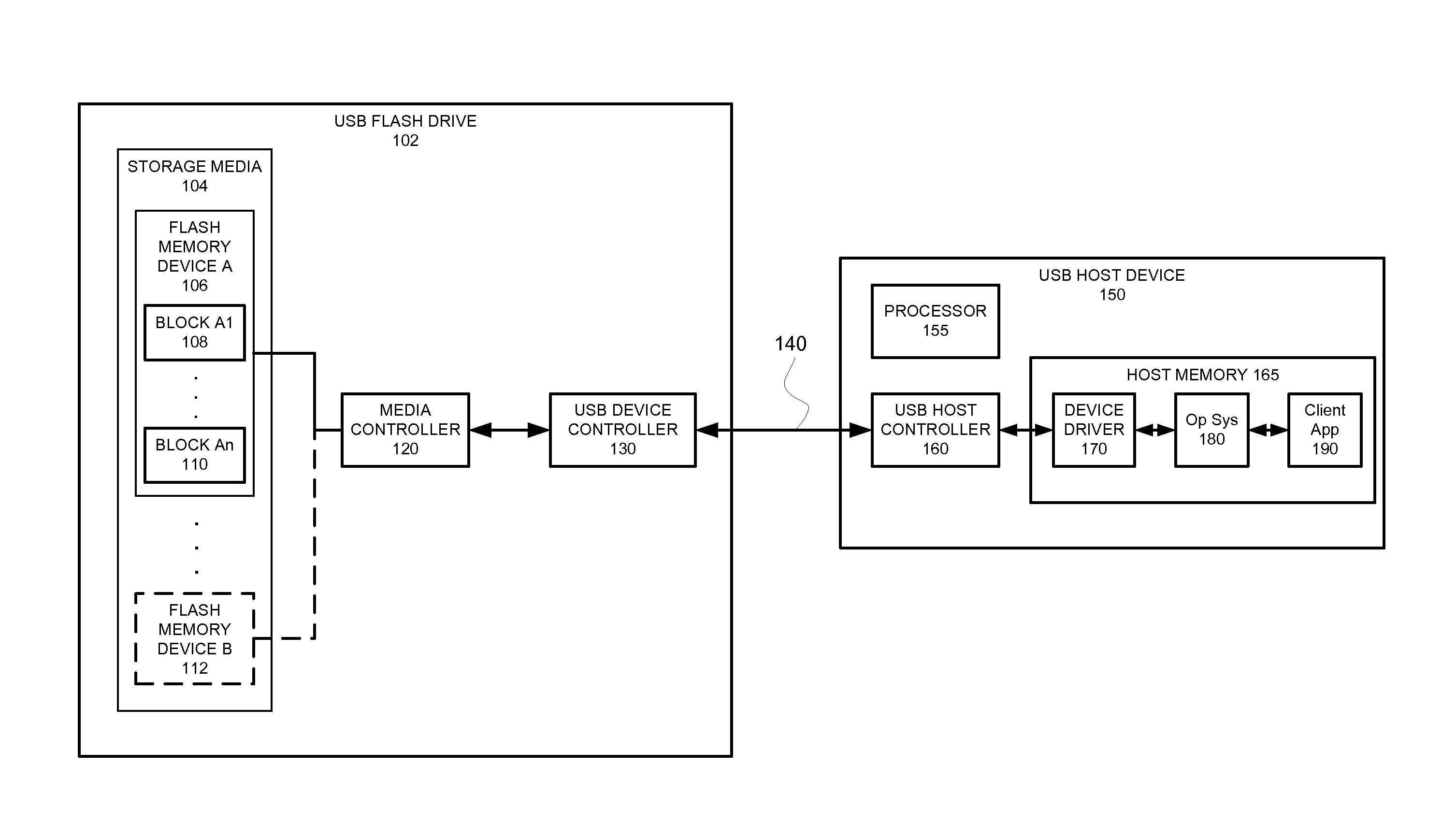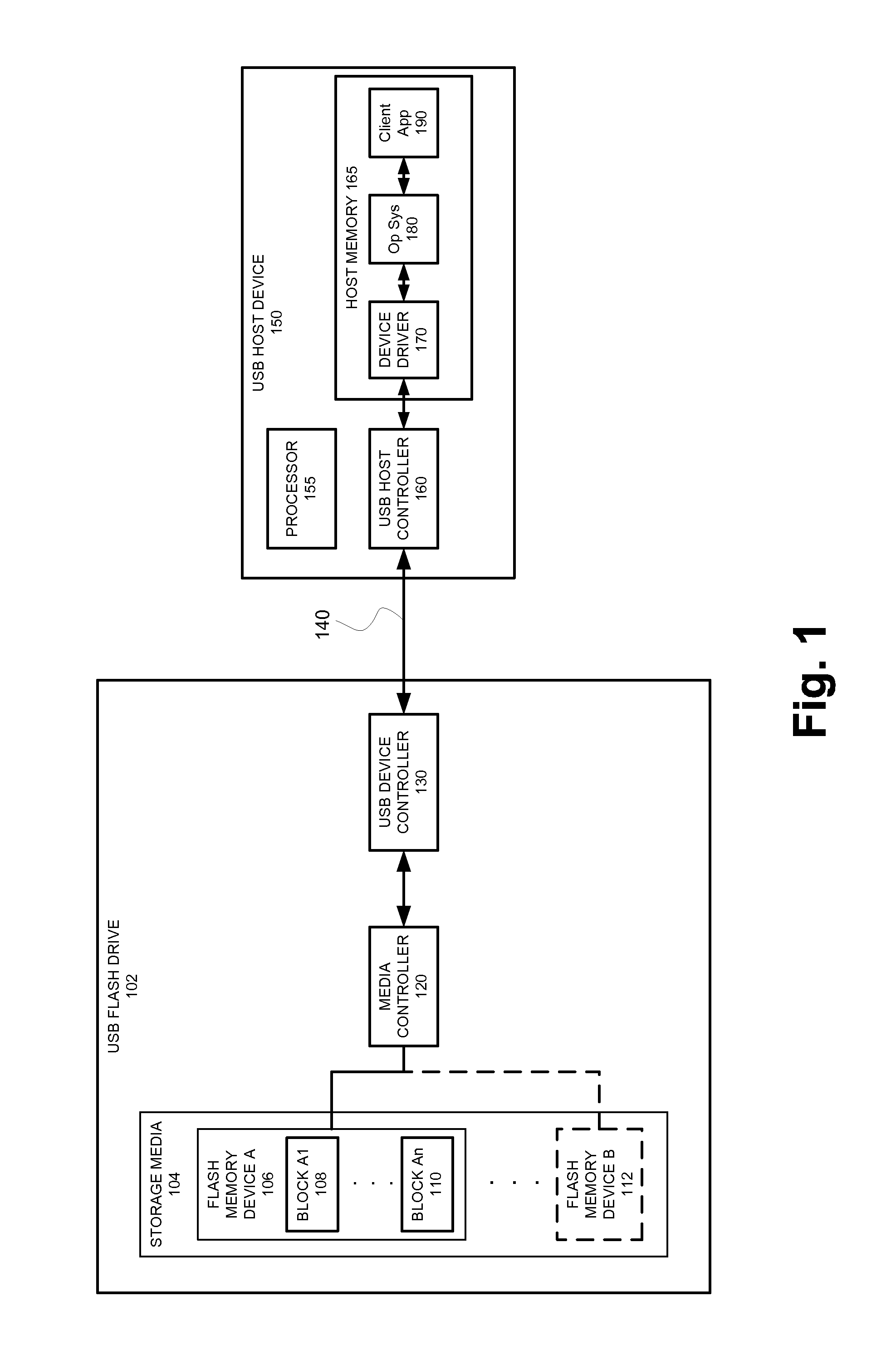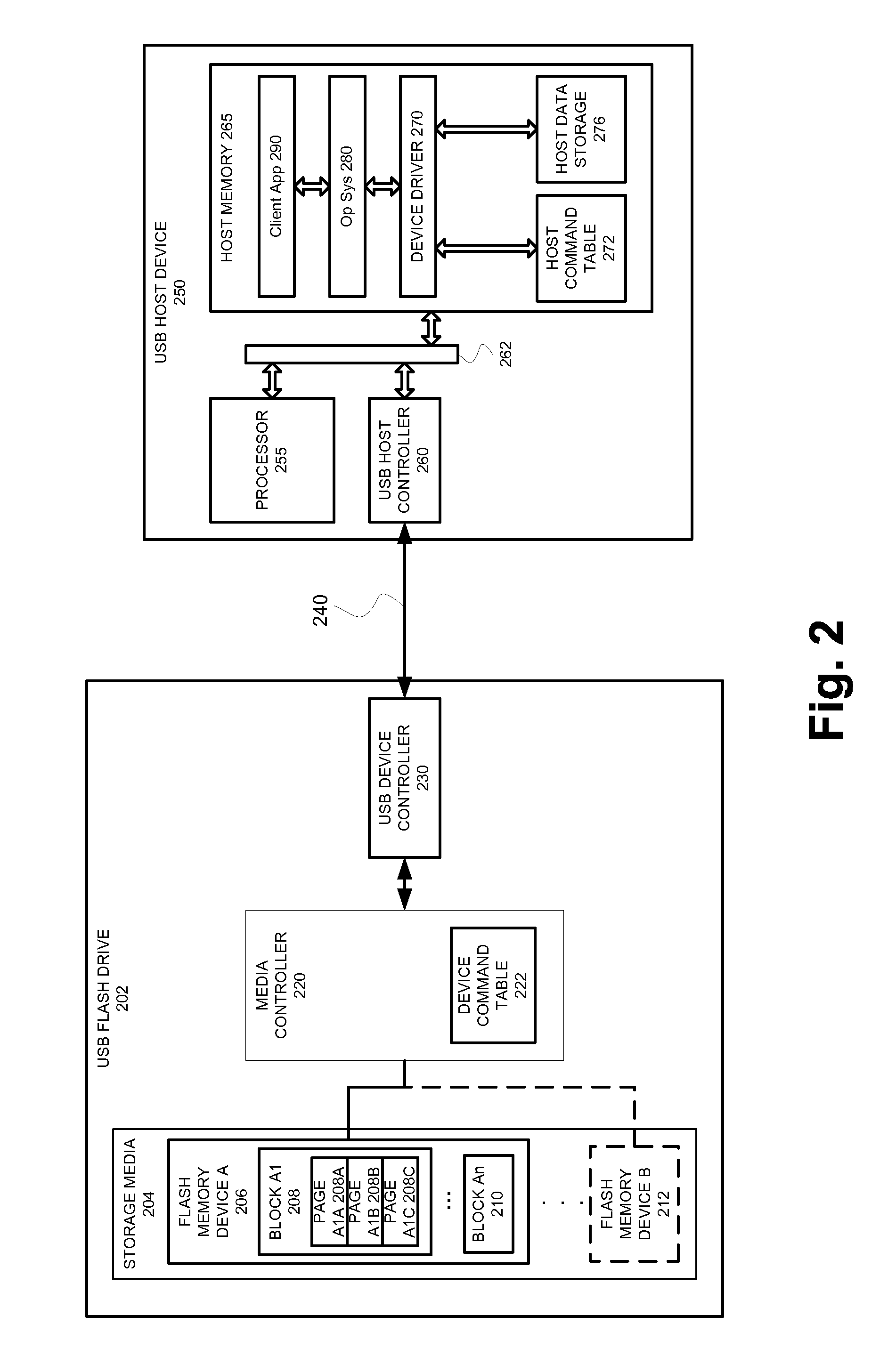Efficient Use Of Flash Memory In Flash Drives
- Summary
- Abstract
- Description
- Claims
- Application Information
AI Technical Summary
Benefits of technology
Problems solved by technology
Method used
Image
Examples
Embodiment Construction
[0023]Aspects of the present invention relate in general to reading and writing of data to non-volatile memory devices. More specifically, aspects of the present invention relate to devices, systems, and methods that enable a host device such as, for example, a personal / laptop / notebook / netbook computer (PC), personal digital assistant (PDA), a mobile / cellular phone, and a desktop computer to efficiently read data from and write data to a flash memory-based, non-volatile, data storage device frequently referred to as a “flash drive,” which are also known by the terms “USB key,”“pen drive,”“Thumb Drive®,”“DiskOnKey®,” and “Jump Drive®.”
[0024]Although the following discussion makes frequent reference to the use of the disclosed devices and techniques in embodiments of a USB flash drive, the inventive concepts presented herein are not specifically limited only to that use, and may find application in other electronic devices known now or in the future.
[0025]The term “flash memory” is us...
PUM
 Login to view more
Login to view more Abstract
Description
Claims
Application Information
 Login to view more
Login to view more - R&D Engineer
- R&D Manager
- IP Professional
- Industry Leading Data Capabilities
- Powerful AI technology
- Patent DNA Extraction
Browse by: Latest US Patents, China's latest patents, Technical Efficacy Thesaurus, Application Domain, Technology Topic.
© 2024 PatSnap. All rights reserved.Legal|Privacy policy|Modern Slavery Act Transparency Statement|Sitemap



